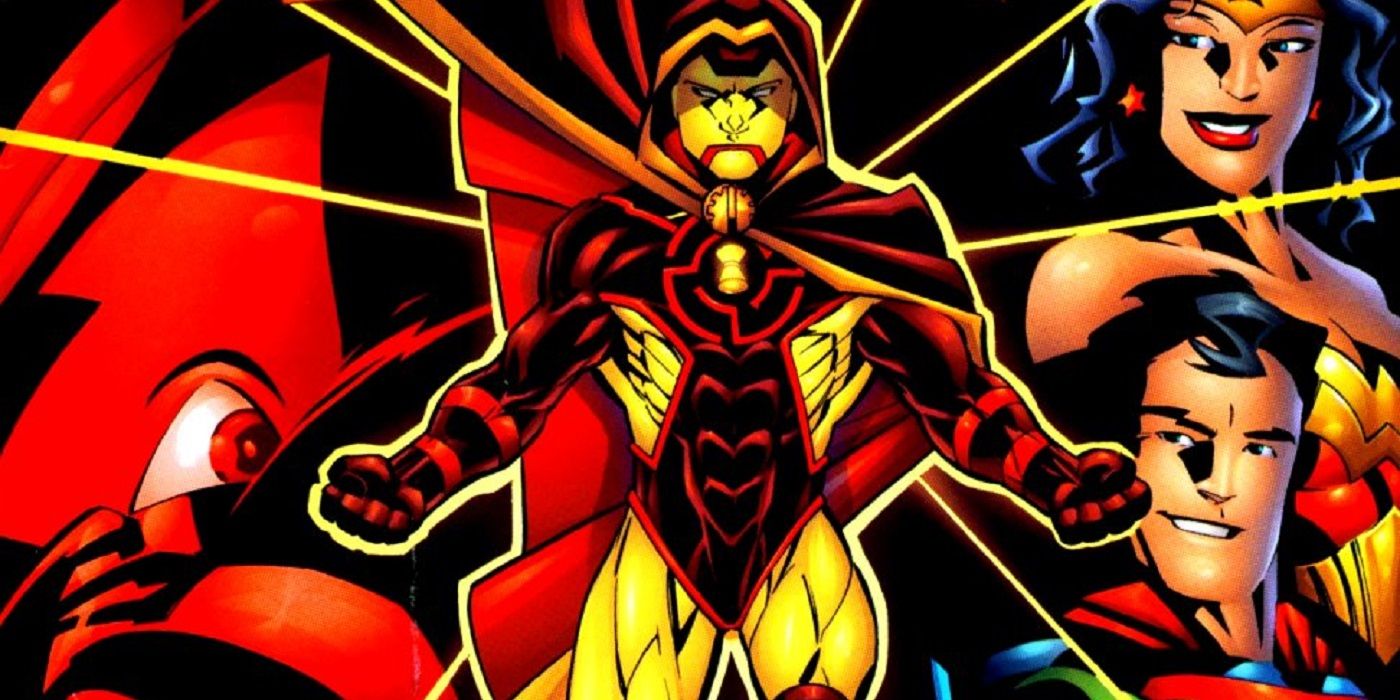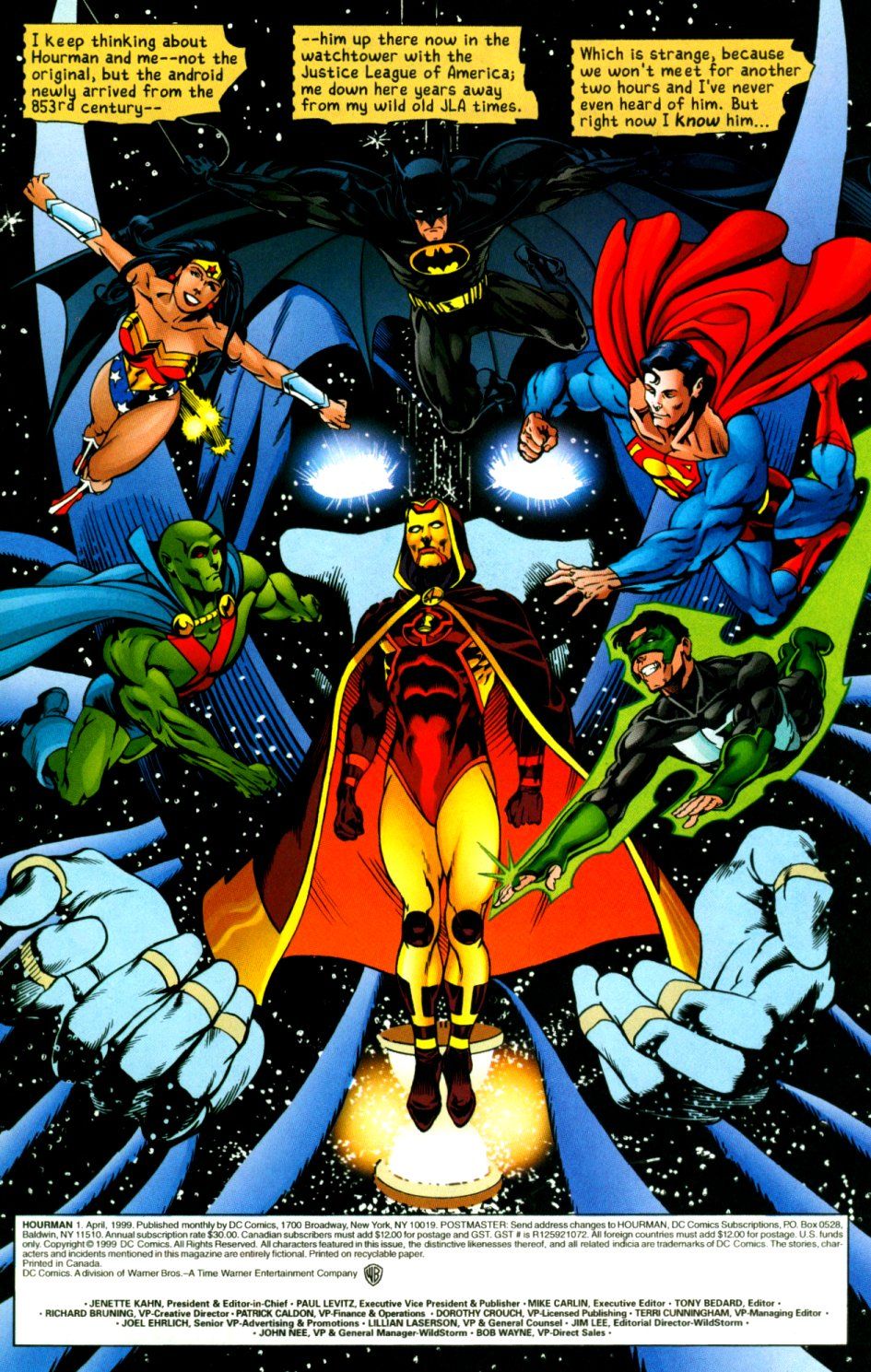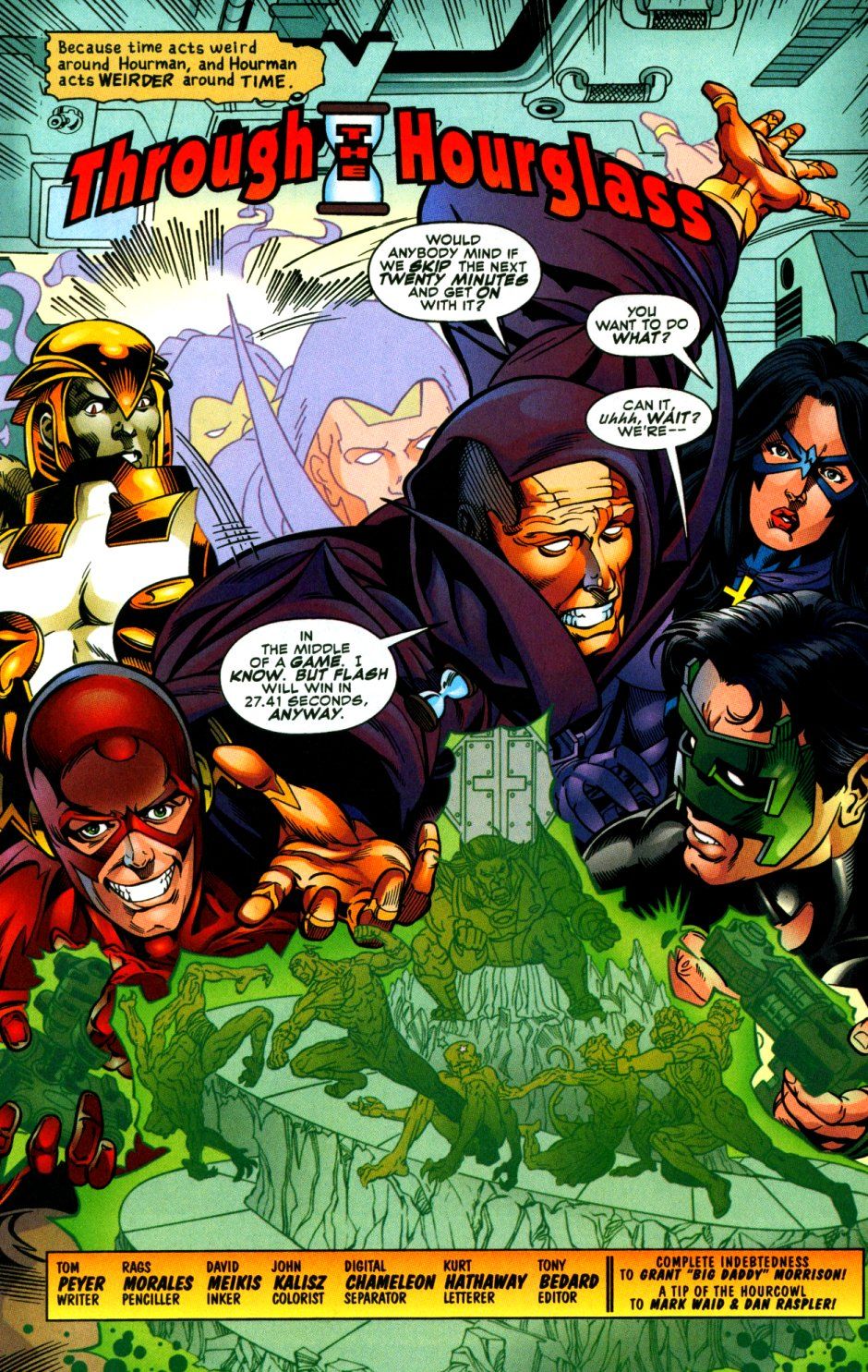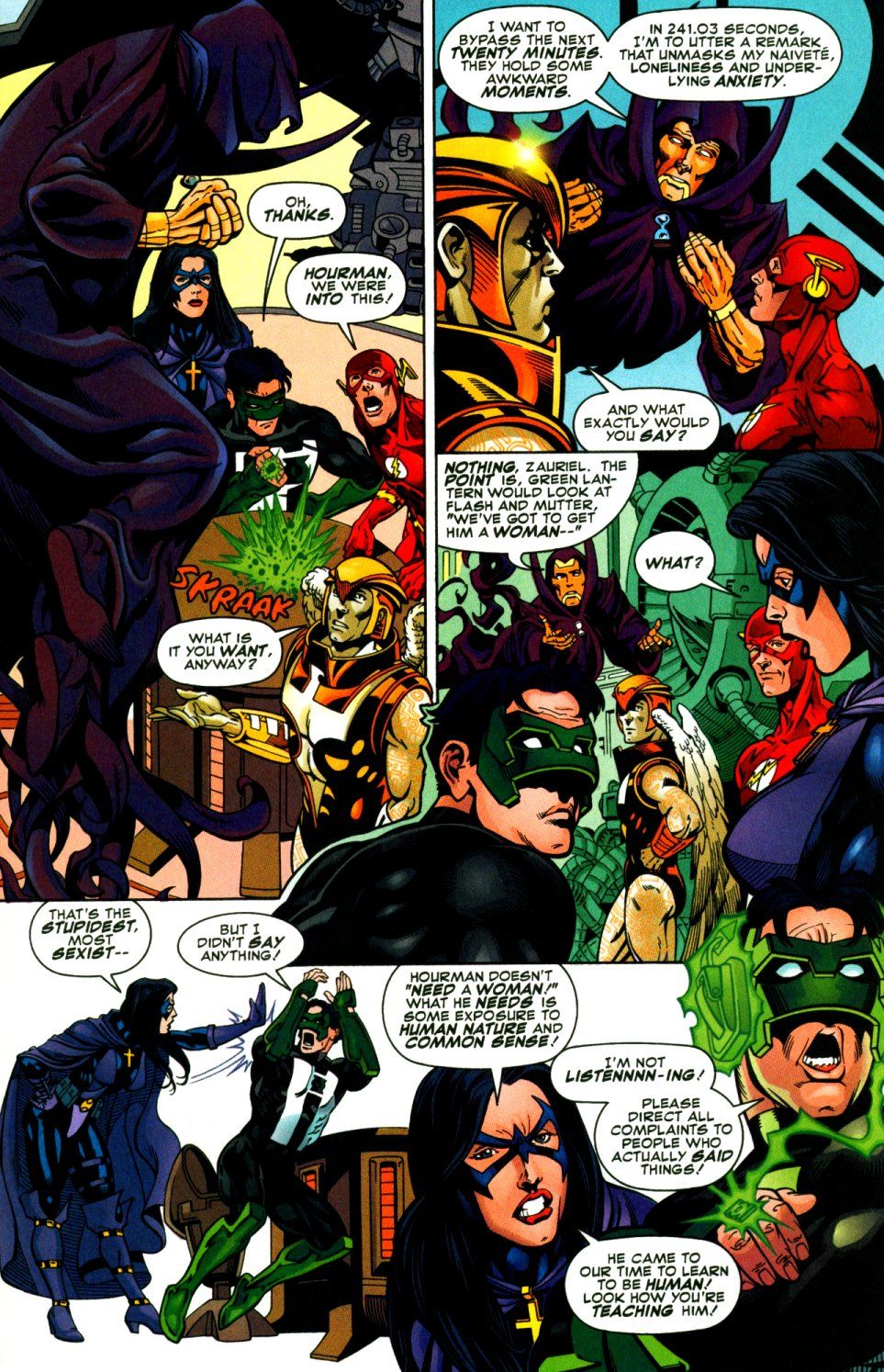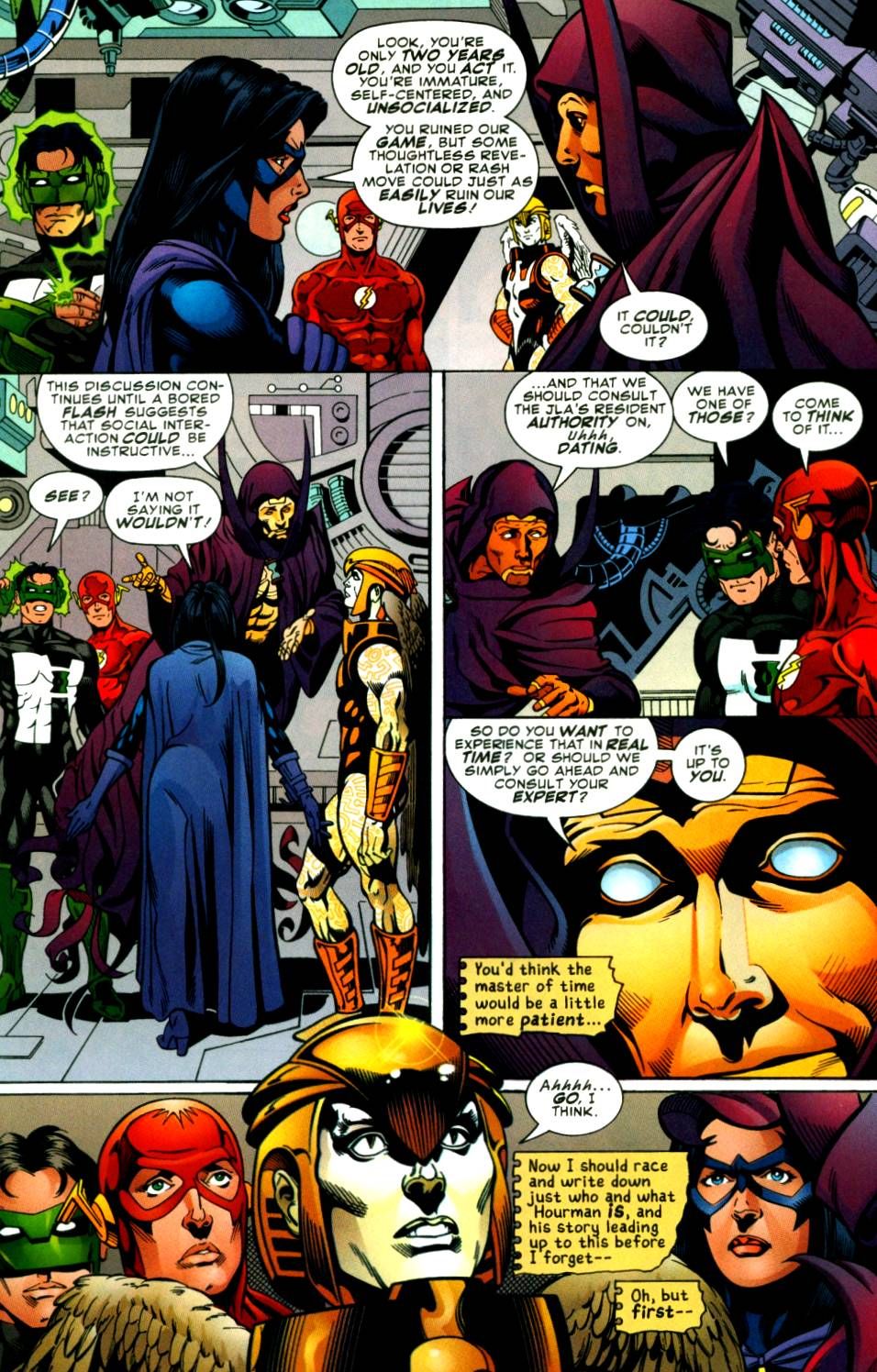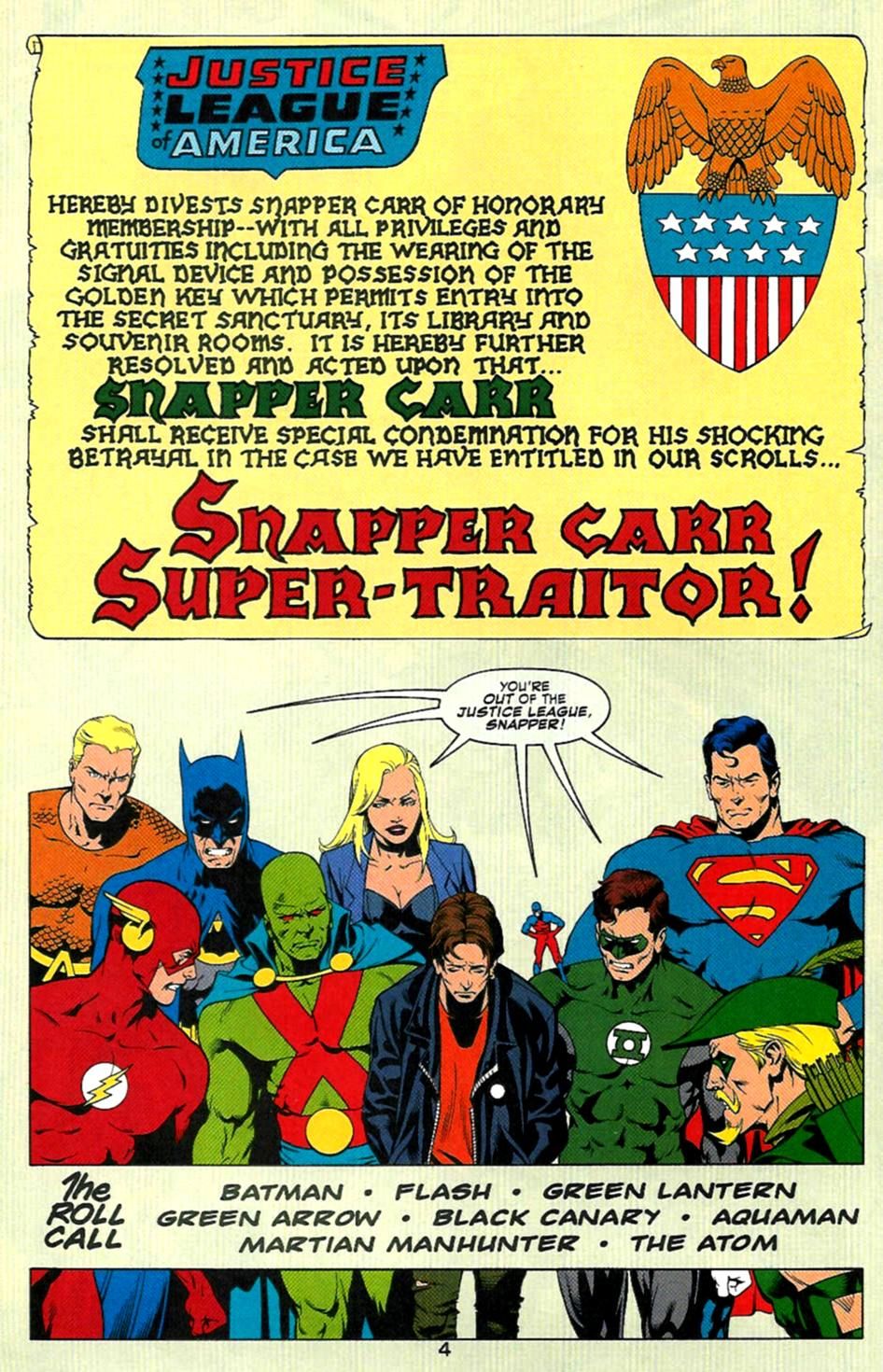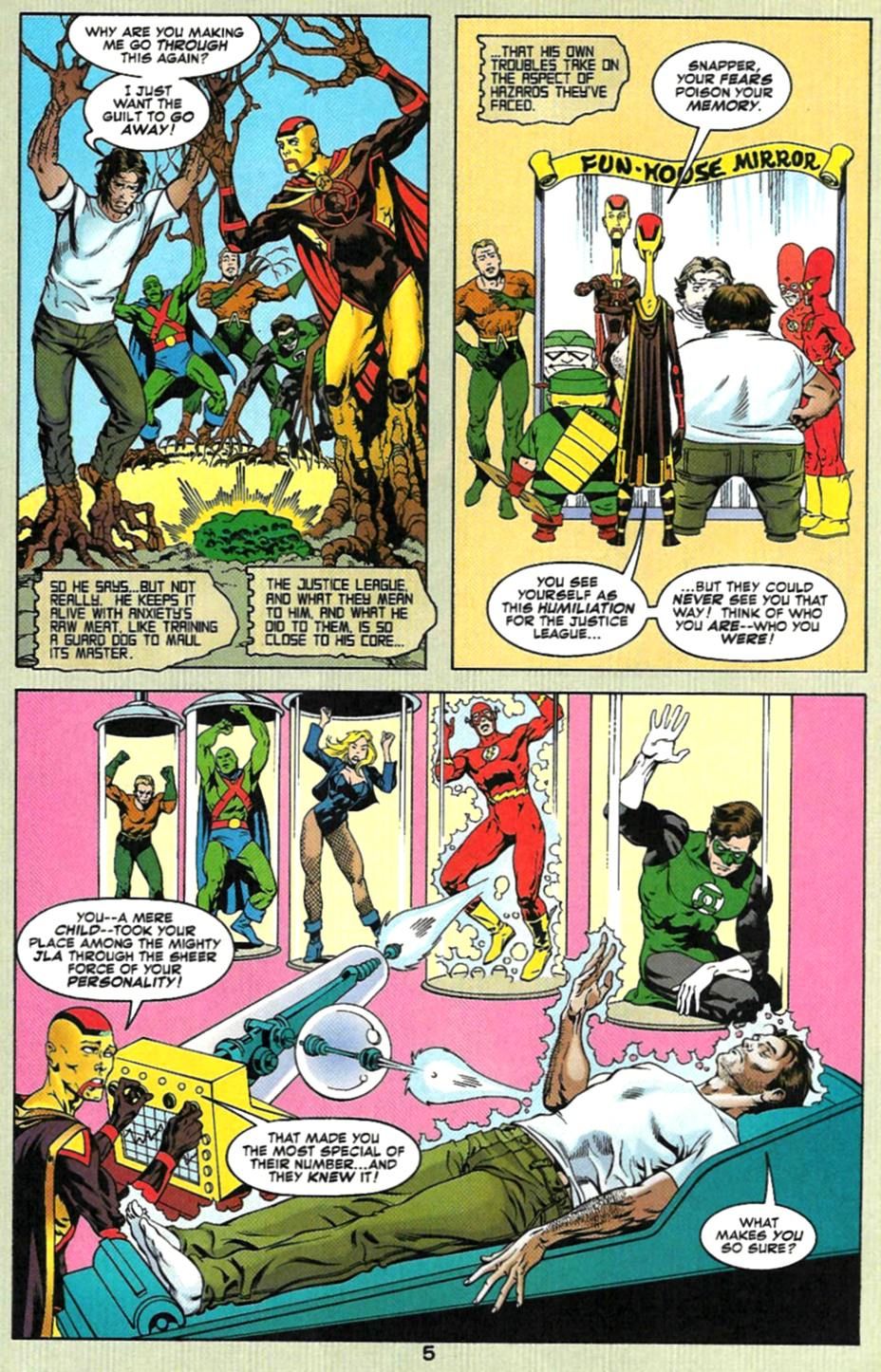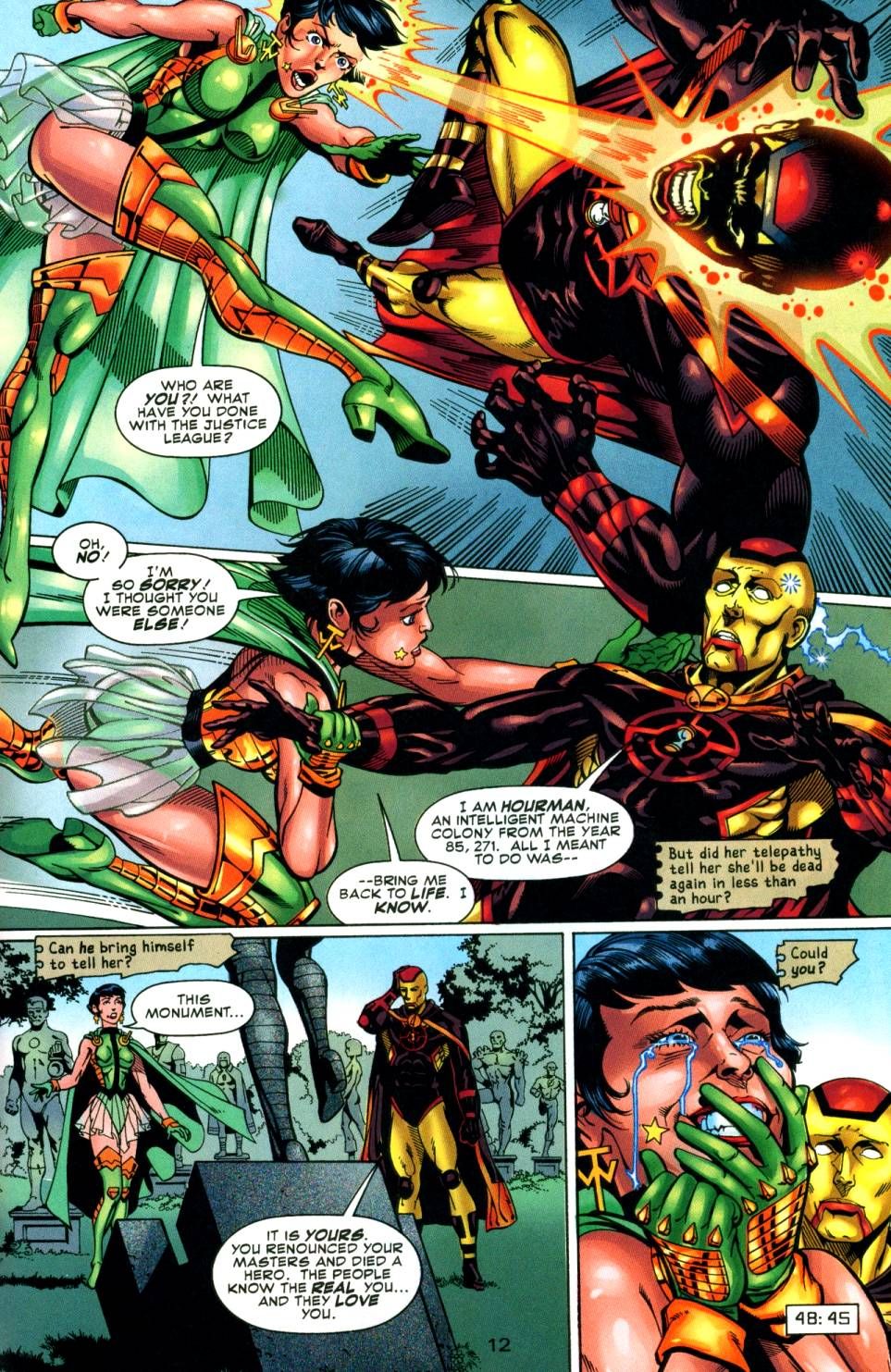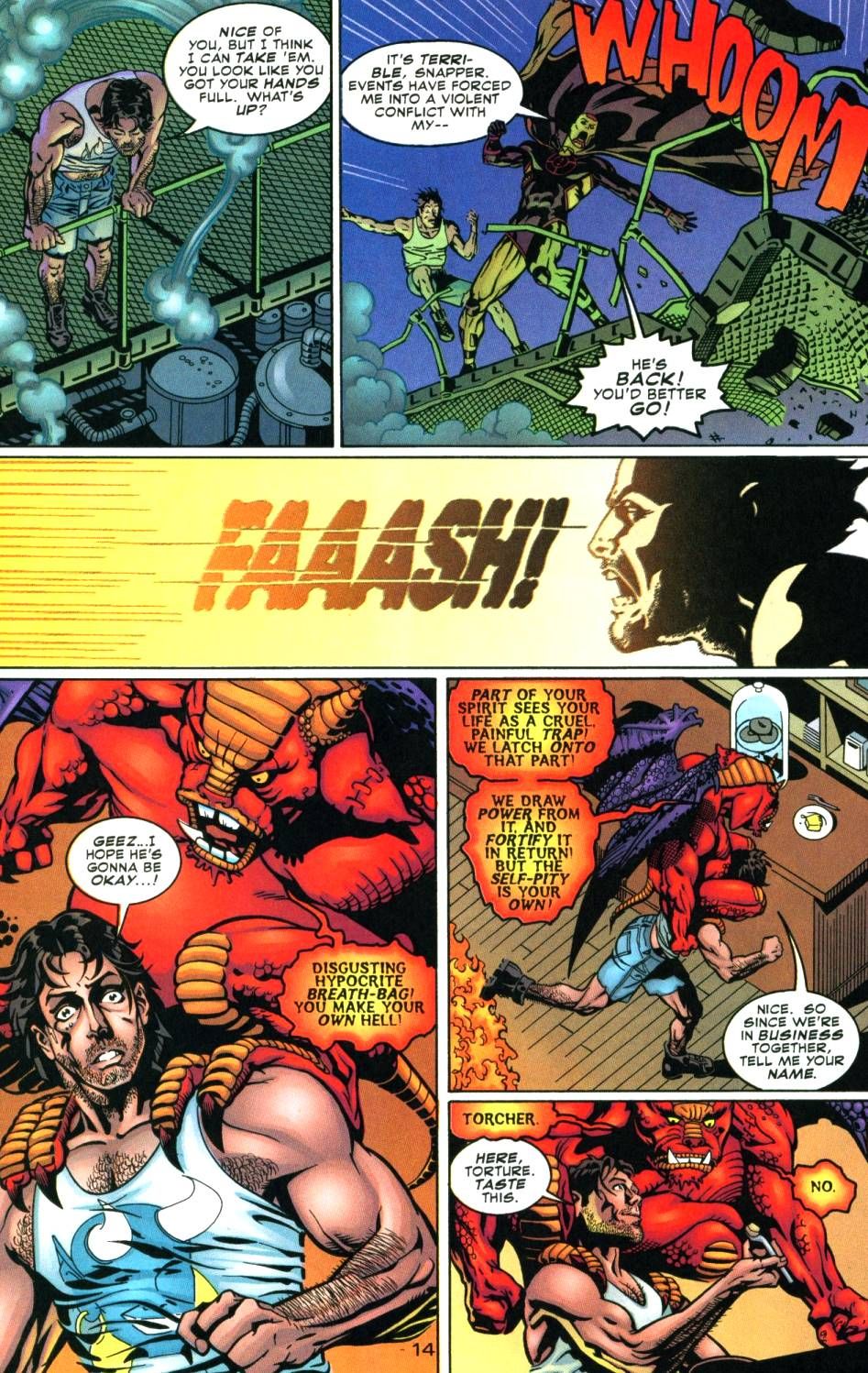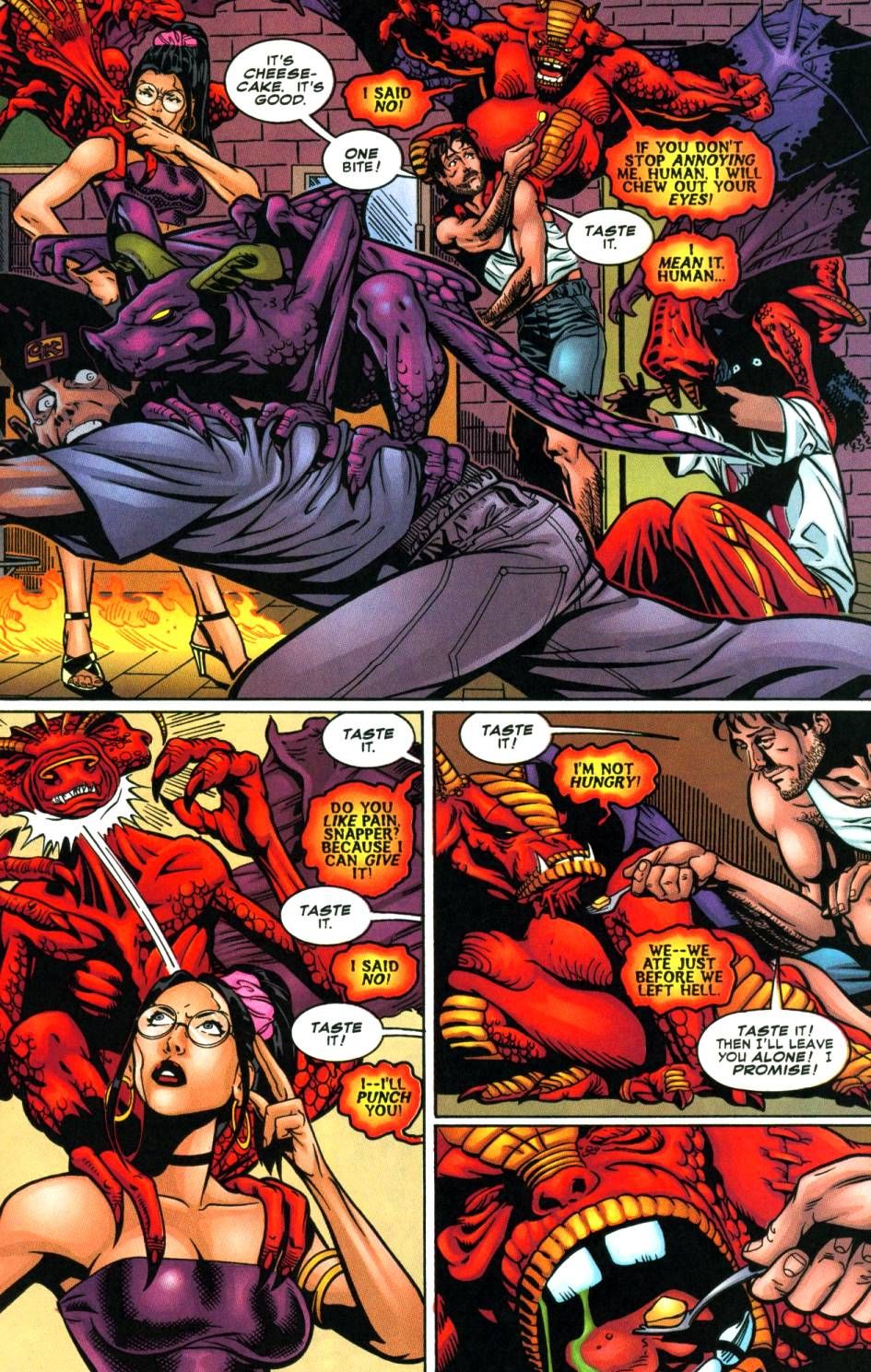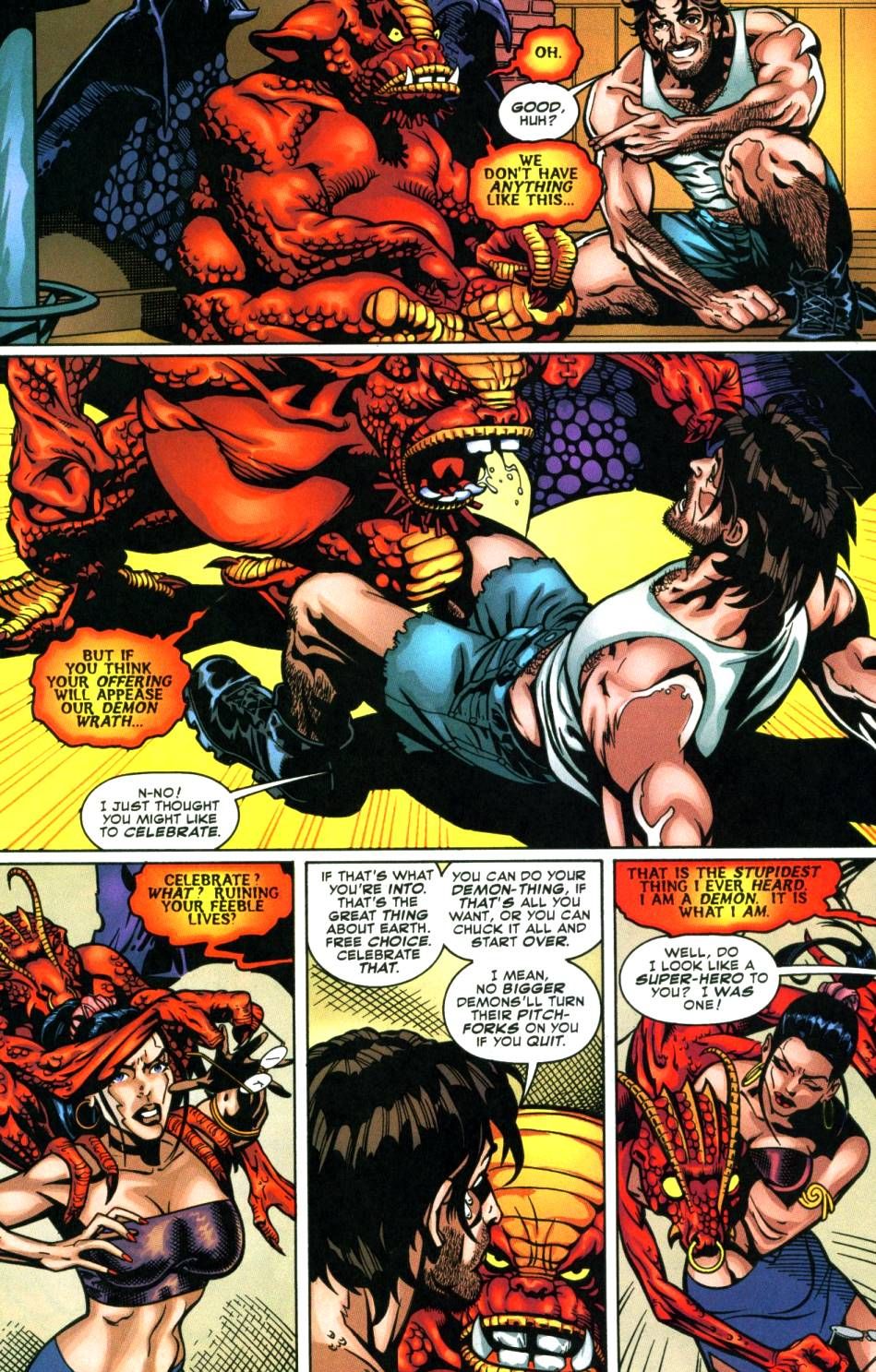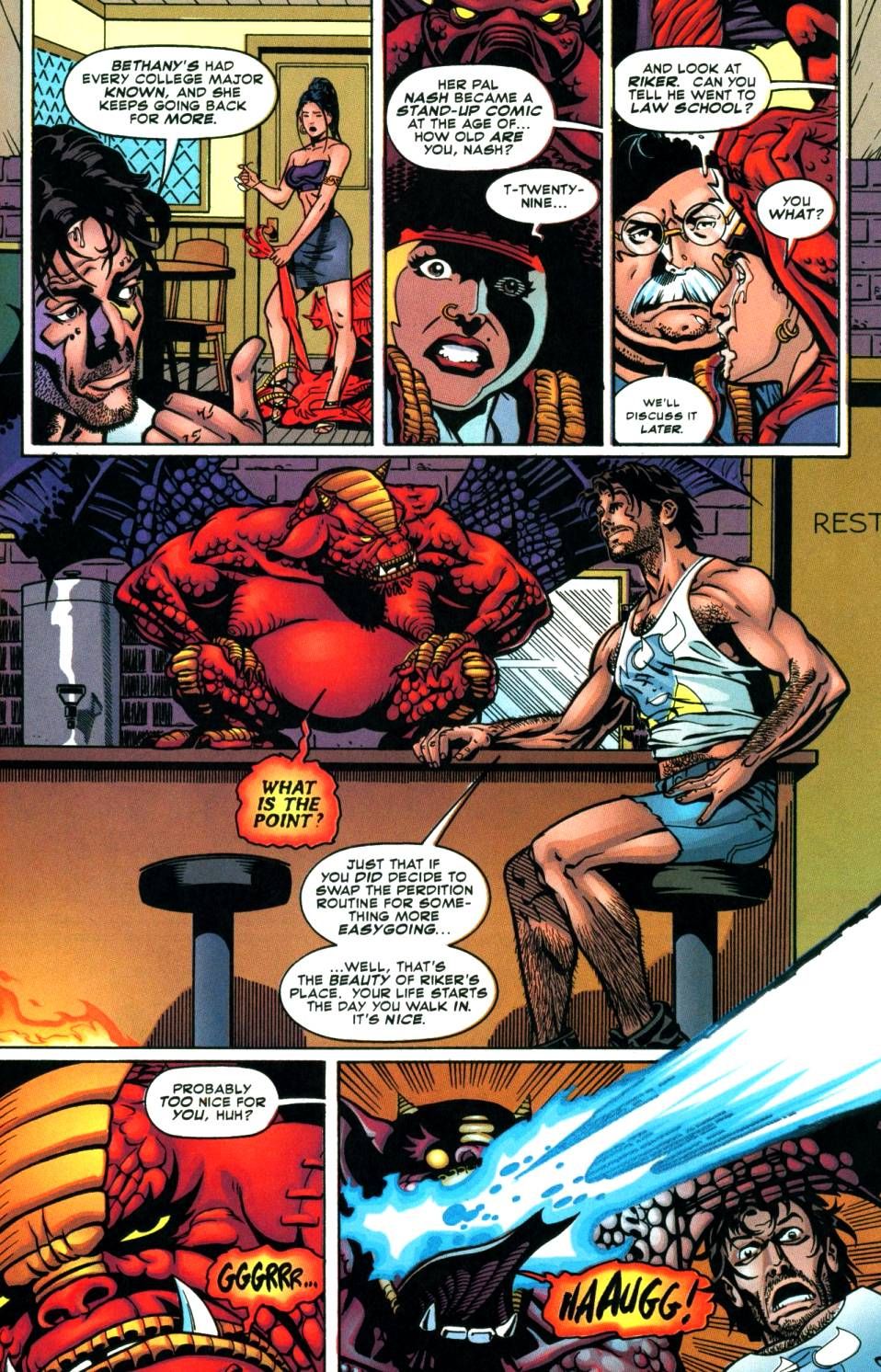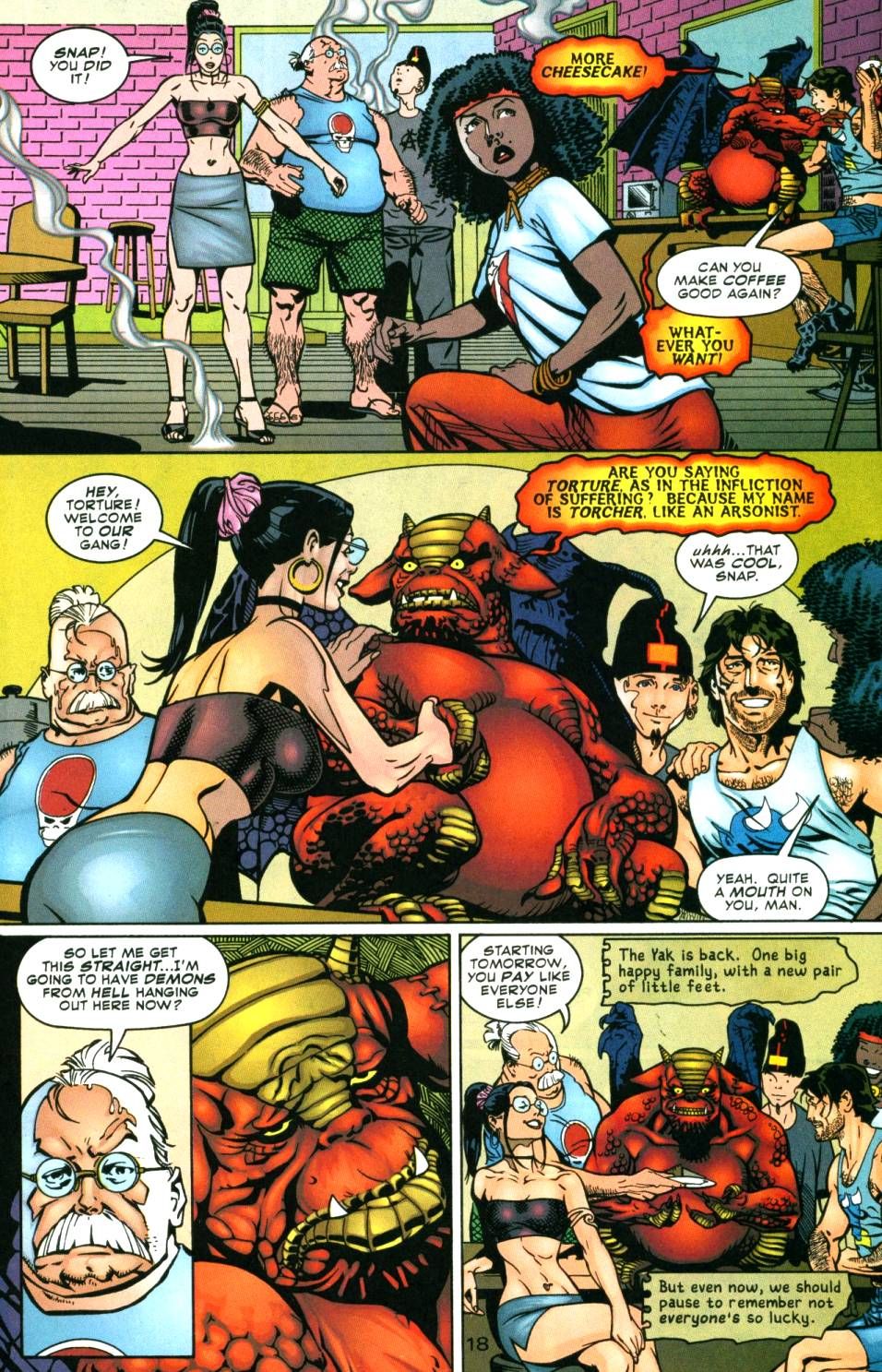This is a feature called "Nothing is Better." I have a feature called "Reason to Get Excited," where I spotlight aspects of current comic books that have particularly impressed me. I had started to expand it to older comics, but it just didn't feel right. I really think "Reason to Get Excited" should be reserved for current comic books. Therefore, this is the equivalent column for older comic books, "Nothing is Better," where I spotlight aspects of classic comic books that have particularly impressed me.
Today, we look at the delightful adventures of Hourman, an android from the future, and Snapper Carr, a former teenage member of the Justice League, by Tom Peyer, Rags Morales and Dave Meikis (the series was edited by the great Tony Bedard).
Hourman was introduced during Grant Morrison's JLA as an android superhero from the future. During the DC One Million crossover, he almost found himself betraying the Justice League (indirectly). This led to his own ongoing series in 1999. The series opens with the League introducing him to a "normal" human to help Hourman find a little humanity...
That human is former Justice Leaguer Snapper Carr. "A little humanity" could possibly be the subtitle of this series, as that is what the whole series explores in great detail, as Hourman befriends Snapper, Snapper's ex-wife, Bethany, and the other wacky residents of the small town. Along the way, Hourman helps Snapper, as well, deal with HIS past, like the time that he, you know, betrayed the Justice League...
In the second issue, Hourman brought back Tomorrow Woman temporarily in some touching character work...
Probably my favorite sequence in the entire series, and just perfectly captured the style and heart of the series, is this moment from Hourman #8, where Snapper saves the gang from a demon by teaching the demon a bit about humanity...through the power of cheesecake...
That's both hilarious AND adorable.
Rags Morales and Dave Meikis did an excellent job on the series, as Peyer did a tough mixture of character work (which puts a lot of reliance on the artist to convey some nuanced emotions) and wacky, out-there ideas (which requires the artist to come up with interesting designs for bizarre situations).
It is remarkable that we really got 25 issues of this awesomely odd comic book.
Okay, folks, this is a feature that is a BIT less conducive to suggestions (as it really is about stories that spoke to me, ya know?), but hey, feel free to still send suggestions in to brianc@cbr.com! Maybe you and I have the same take on things and I'll use your idea!

